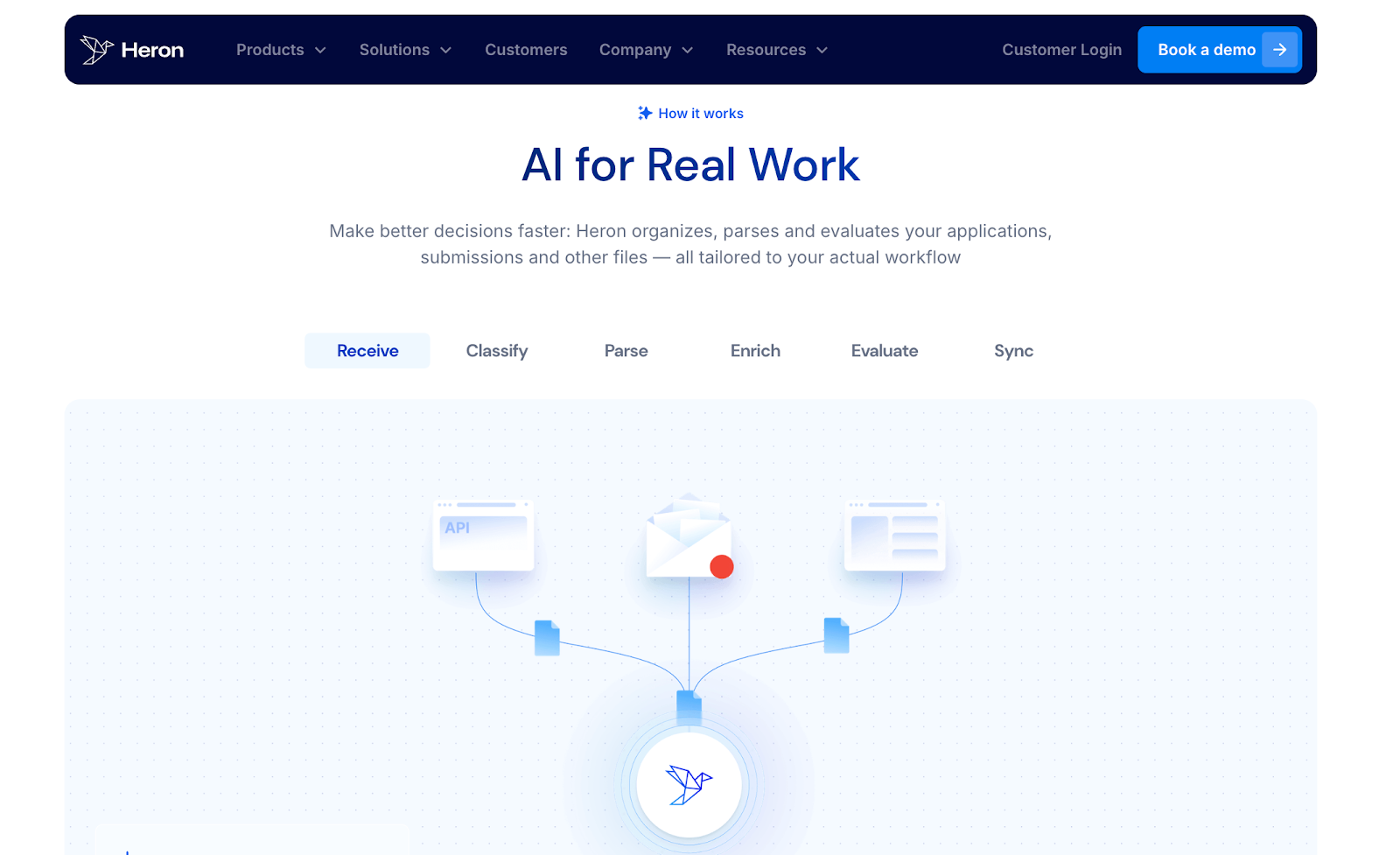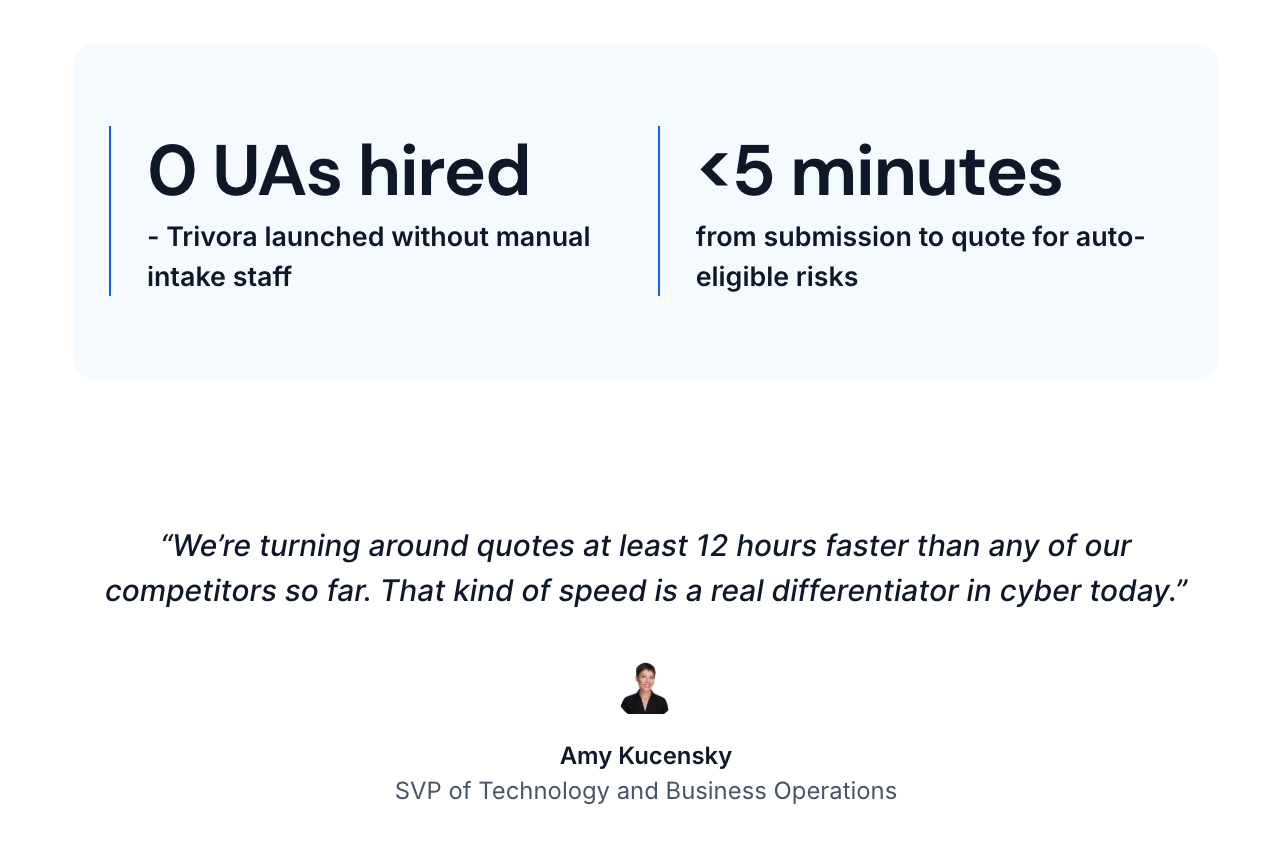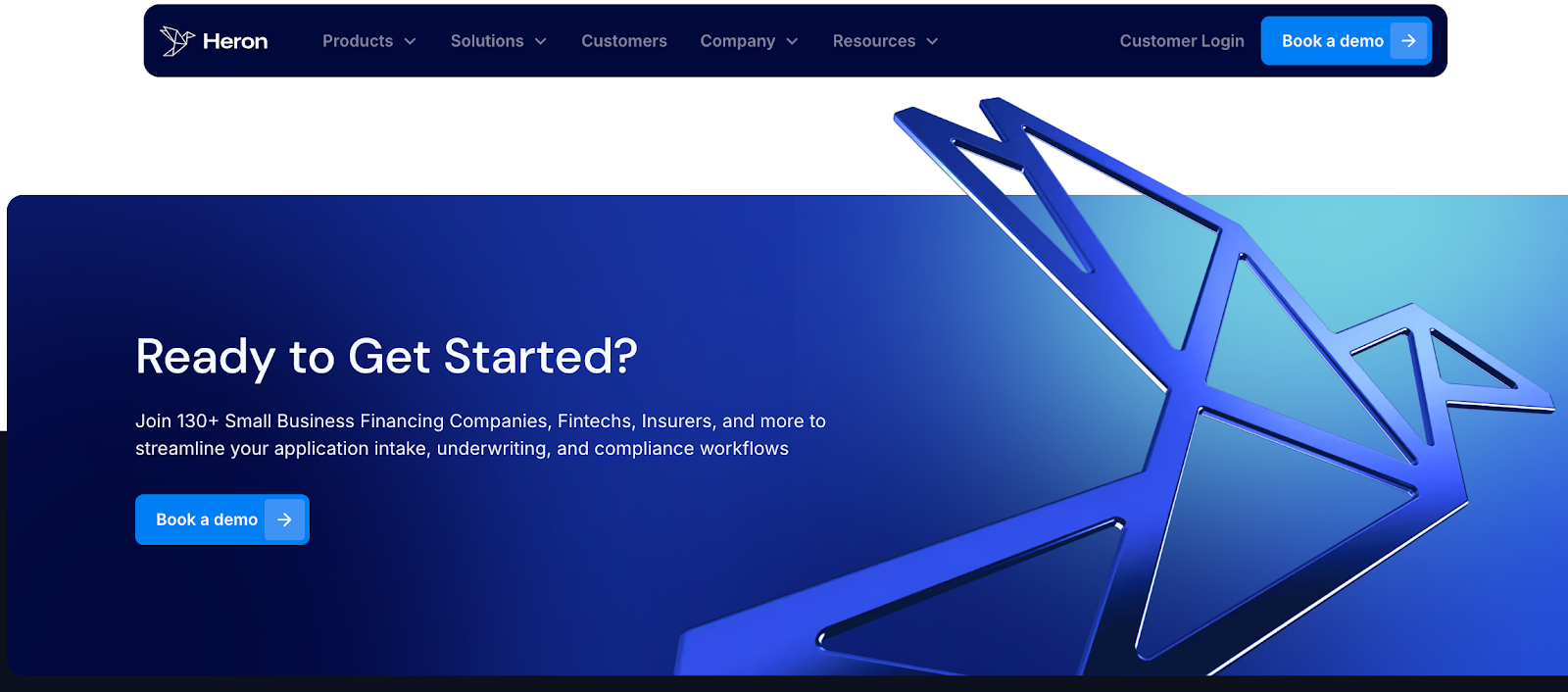Managing insurance paperwork can feel overwhelming. From claims and renewals to compliance files and client correspondence, the volume of documents to process can quickly stack up.
Even the most organized teams will struggle to keep pace, which is why the industry is now looking for smarter solutions.
In this article, we’ll look at what document automation for insurance is, and if it's really worth the investment.
What is Document Automation for Insurance?
Traditional workflows in the insurance industry often rely on manual data scrubbing, which can be slow and prone to mistakes and human errors.
A better approach many MGAs and insurance brokers are turning to now is insurance document automation, which is the use of intelligent document processing (IDP) to handle insurance paperwork in a faster and more organized way.
This type of document processing automation keeps information accurate and makes claims processing smoother. It also cuts down the need for manual data entry or long manual review, which often slows insurance brokers down.
You can process documents like policy quotes, proposals, renewals, and endorsements with this approach. It also works for claims correspondence, underwriting files, compliance forms, and client letters.
How Does Document Processing Work?
Insurance document processing combines automation and human input to handle large amounts of paperwork more efficiently. Here’s how the process usually works:
Document Capture And Digitization
Every day insurance work involves claims forms, proofs of loss, invoices, and policy documents. These arrive in both paper and digital formats.
With AI-powered document scanning and optical character recognition (OCR) technology, paper documents are turned into usable digital files.
For example, a handwritten claims form can be scanned, recognized, and converted into text that can be searched or pulled into a system. This step makes sure every document, no matter its source, is available in a consistent digital format.
Classification And Indexing
After documents are digitized, they need to be organized. Intelligent systems automatically classify them by type, such as claims, endorsements, or policy renewals.
Metadata like policy numbers, claim IDs, or dates is added to the index of each file. This makes retrieval simple. Some document automation tools, like Heron with its automatic file renaming feature, can even rename files based on custom naming templates.
If a broker needs to review all claims linked to a single event, the system can pull those files instantly, without digging through folders manually.
Data Scrubbing And Validation
Insurance paperwork often contains key details like customer names, policy numbers, or loss amounts.
Intelligent document processing combines artificial intelligence, natural language processing, and machine learning to extract relevant data from both structured and unstructured documents.
This could mean pulling out accident details from a claims form or premium amounts from an invoice.
The data is then checked against internal databases or rules to confirm accuracy, reducing the need for manual data scrubbing and minimizing errors.
Workflow Automation And Routing
Once data is ready, document automation tools route documents into the right workflows.
A new claims form can be sent directly to claims processing, while underwriting documents may go through additional review steps.
Notifications, approvals, and version control are all part of this automated routing. This stage keeps processes moving and ensures the right person or team gets the right document at the right time.
Verification And Compliance
The insurance industry requires strict checks to meet regulatory standards. At this stage, audit trails, digital signatures, and compliance validations are applied.
The system can also compare documents with earlier versions to detect policy changes or spot potential fraud.
If a claim is submitted with altered details, the system can flag it for review. This level of verification builds trust and accountability across operations.
Storage And Retrieval
Processed documents are stored in secure digital repositories. These repositories are designed for quick access, whether during audits, customer service calls, or ongoing claims handling.
With seamless integration, an agent can pull up a client’s policy history or a set of claims documents in seconds. This not only saves time but also makes customer interactions smoother.
Review And Resolution
Even with intelligent automation, some cases need human judgment. Complex claims, unusual policy changes, or compliance red flags often require manual review.
After this step, the process ends with actions such as issuing a new policy, approving or denying a claim, or sending an official communication to the customer.
Applications of IDP for Insurance
IDP gives the insurance industry tools to handle different document types more effectively. Here are some of its key applications:
Claims Processing Automation
Claims generate some of the largest volumes of paperwork in the insurance industry. IDP makes this easier by scrubbing claims data from medical reports, receipts, and invoices, even when the documents come in unstructured formats.
A handwritten accident report can be digitized, its document content read, and the coverage details pulled out automatically.
The system then classifies the document type, matches it to the right workflow, and routes it for approval or further review.
Fraud Detection and Compliance
Fraud prevention and compliance are constant challenges for insurers. IDP helps by identifying unusual patterns in claims data that may point to fraudulent activity.
For instance, if several medical reports show conflicting details for the same claim, the system can flag it for human review.
At the same time, intelligent document automation helps insurers reduce compliance risks by verifying coverage details, checking customer identity documents, and confirming financial information against regulatory requirements.
Document Management
Insurance brokers handle thousands of policy documents, endorsements, financial statements, and renewal notices every day.
Without automation, keeping track of all these document types can quickly become overwhelming. IDP creates centralized repositories where every file is stored, indexed, and easy to retrieve.
If a broker needs to check coverage details from a five-year-old policy, the system can pull up the exact file within seconds.
This improves collaboration across teams, reduces delays in customer communication, and helps insurers stay organized while delivering service that meets customer expectations.
Key Benefits of Document Automation for Insurance Brokers
During busy times, like renewal season, a broker's workload can feel overwhelming. With automated workflows, here’s what changes:
Get Work Done Faster Without The Stress
One of the biggest advantages is speed. Automated workflows drastically reduce the time spent on repetitive paperwork. Tasks like preparing exposure data, SOVs, or loss runs can be done in minutes instead of hours.
During peak renewal periods, intelligent automation helps brokers process more accounts without burning out. This kind of operational improvement means brokers can focus on clients instead of drowning in paperwork.
No More Manual Errors
Human error is common when handling high volumes of paperwork. Manual labor, like re-typing coverage details or re-entering claim numbers, often leads to mistakes that slow down insurance processes.
With intelligent automation, data is pulled directly from source documents and validated automatically.
Stay On Top Of Compliance Rules
The insurance sector has strict regulatory requirements, and falling short can be costly. Automated workflows come with built-in audit trails and business rules that enforce compliance at every step.
Whether it’s underwriting forms, policy documents, or renewals, robotic process automation keeps everything aligned with industry standards, lowering compliance risks and protecting the broker’s reputation.
Save Money Across The Board
Cost reduction is another clear benefit. Intelligent document automation minimizes manual labor and cuts down on paper, postage, and storage costs.
Faster processing cycles also mean brokers see revenue sooner, adding to overall operational efficiency.
These savings make automation a practical step toward long-term operational improvement.
Create A Better Customer Experience
An improved customer experience comes naturally with faster, more accurate document handling.
Clients benefit from quicker claims settlements, timely renewals, and communication that feels personal.
Improved customer satisfaction strengthens broker-client relationships and makes brokers more competitive in the insurance sector.
Keep Employees Focused On What Matters
When repetitive tasks are automated, employees can focus on high-value work like client service, renewals, or growing new accounts. By cutting out routine manual labor, automation improves morale and productivity.
Staff feel more engaged, and the entire team benefits from smoother insurance processes supported by enabling systems and core systems that do the heavy lifting in the background.
How Heron Helps Insurance Brokers Automate Submission Intake
If you’re a broker, you already know the stress of keeping up with email. Submissions arrive one after another, packed with ACORDs, loss runs, SOVs, supplemental applications, and other documents.
They arrive in all kinds of formats, often unstructured and inconsistent. That means hours of sorting, rekeying customer data, and chasing down missing details.
It also means costly delays and a lot of manual processes that keep you from focusing on clients.
Heron takes your messy inbox and turns it into structured, actionable insights you can use right away. Leading insurers are already relying on it, and here’s why you might want to as well.

Automate Data Entry And Document Ingestion
Think about how much time you spend just getting submissions ready. With Heron, those repetitive tasks are gone.
The system pulls in emails from multiple channels, standardizes file names, recognizes document types, and loads customer data straight into your core systems.
You don’t have to spend hours doing manual prep work. Submissions that used to take half a day to clean up are ready to go in minutes, with fewer errors along the way.
Validate And Enrich Applications
Applications are often missing coverage details or come with incomplete information. That’s where delays happen.
Heron validates every submission against your underwriting rules, flags missing pieces, and enriches customer data from external sources.
You end up with structured, decision-ready data without having to open a single PDF. This cuts down on costly delays and reduces errors that cause back-and-forth emails with clients.
Connect Directly With Your Workflow
Heron doesn’t sit off to the side. Our solution integrates with your workflow and ties directly into your CRMs, PAS, rating engines, and workbenches. That means submissions can be auto-created, updated, or routed instantly.
You can even compare application details to inspection reports or other documents without manual review. Everything stays in sync, and you keep a full audit trail without extra effort.
Support For All The Documents You Handle
You work with more than just clean PDFs. Sometimes you’re handed low-quality scans or even handwritten forms.
Heron supports over 50 document types, from ACORDs and loss run reports to SOVs and supplemental applications.
Even unstructured formats can be processed with insurer-grade accuracy, so you don’t have to waste time rekeying or second-guessing what’s on the page.
Real Business Impact You Can See
When you process thousands of submissions every year, even small improvements add up fast. With Heron, brokers handling 5,000 submissions annually can save over 70,000 hours of work.
That’s the same as 34 full-time employees. In real numbers, it comes out to more than $1.5M saved every year.
Beyond cost savings, it gives you the ability to take in more applications, respond in hours instead of days, and grow your business without piling on more staff.
How Heron Helped Trivora Save Time and Win Deals Faster
Trivora Insurance set out to compete in cyber liability with one clear goal: to quote faster than anyone else.
Trivora wanted quotes issued in under 5 minutes for auto-eligible risks, but did not want to hire Underwriting Assistants or spend months building middleware.
Heron solved the problem by becoming Trivora’s submission engine, business rules engine, and orchestration layer.
Submissions arrived by email, Heron parsed the content, validated coverage details, enriched the data, and routed quotes through straight-through processing. Even handwritten or scanned forms were read with insurer-grade accuracy.
The results? Trivora launched with 0 underwriting assistants hired, and quotes for qualifying risks now move from submission to quote in under 5 minutes.
Across all businesses, they are turning quotes around at least 12 hours faster than competitors.
With Heron, Trivora achieved faster processing speed, eliminated costly delays, and proved that straight-through processing can give a new MGA a major edge right from day one.

Simplify Your Insurance Document Workflows with Heron

Managing submissions, renewals, and claims often means dealing with manual workflows that slow you down and add unnecessary stress.
Every email, scanned form, or handwritten file has to be sorted, rekeyed, and checked, which drives up operational costs and increases the risk of costly errors.
Heron automates the messy parts of document handling so your team can focus on underwriting, client service, and growth.
With Heron, you get a platform that reads and organizes critical data from all types of documents. Whether it is ACORDs, loss runs, supplemental applications, or other forms, Heron's AI captures the details you need without relying on manual input.
MCA brokers and funders also rely on Heron for an AI-powered lending solution. The platform can scrub and validate critical data from bank statements, financial documents, and other paperwork required for lending decisions.
FAQs About Document Automation for Insurance
What is automation in insurance?
Automation in insurance means using technology to handle tasks that were once manual, like processing claims, sending updates, or tracking policies.
It helps reduce errors, saves time, and improves customer communications with faster service. Many companies now use AI-powered solutions to make these processes smarter and more efficient.
What is an example of document automation?
An example of document automation in insurance is generating policy documents or claim forms automatically.
Instead of filling out paperwork by hand, the system creates accurate files based on stored data. This helps insurers stay on top of compliance standards while cutting down on repetitive work.
What is intelligent document processing for insurance?
Intelligent document processing uses machine learning and automation to read, scrub, and organize information from documents like claims, contracts, or medical reports.
This reduces manual entry and speeds up approvals, making it easier for insurers to provide personalized communications that match customer needs.
What is DMS in insurance?
A DMS, or Document Management System, in insurance is software that stores, organizes, and tracks documents securely. It makes it easier to find records, share files across teams, and meet regulatory requirements.
A strong DMS improves efficiency and also supports better customer communications by keeping information accessible and accurate.


